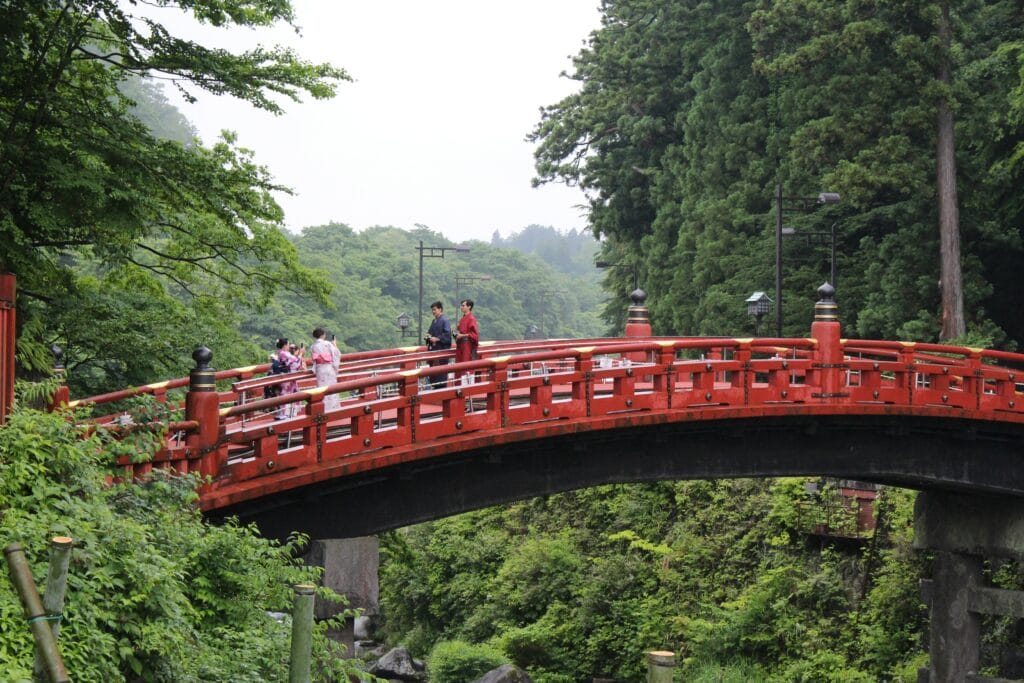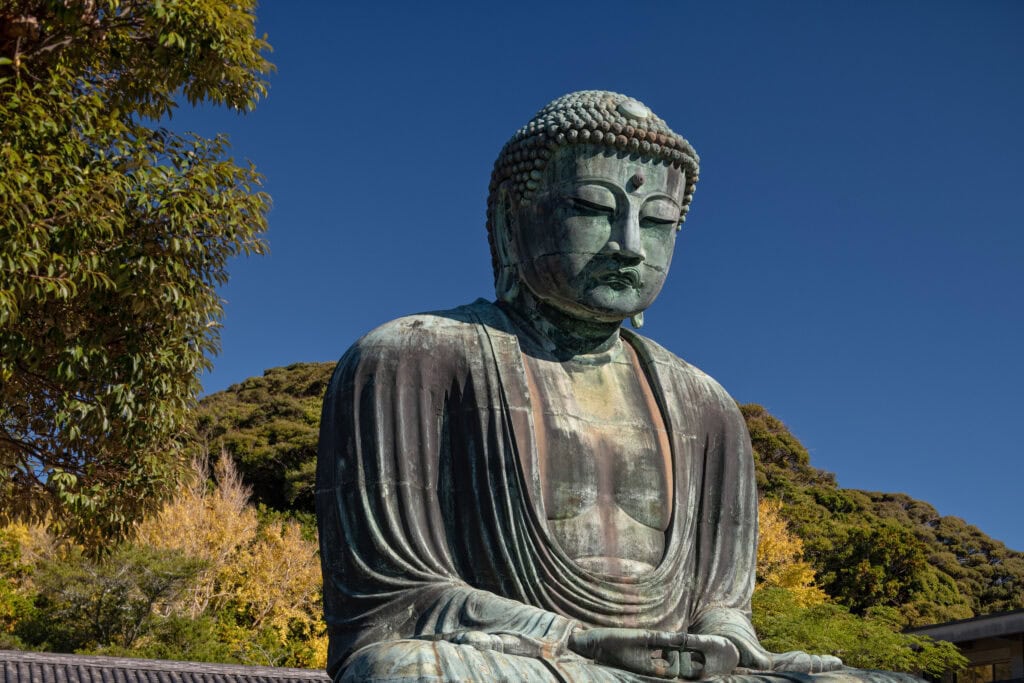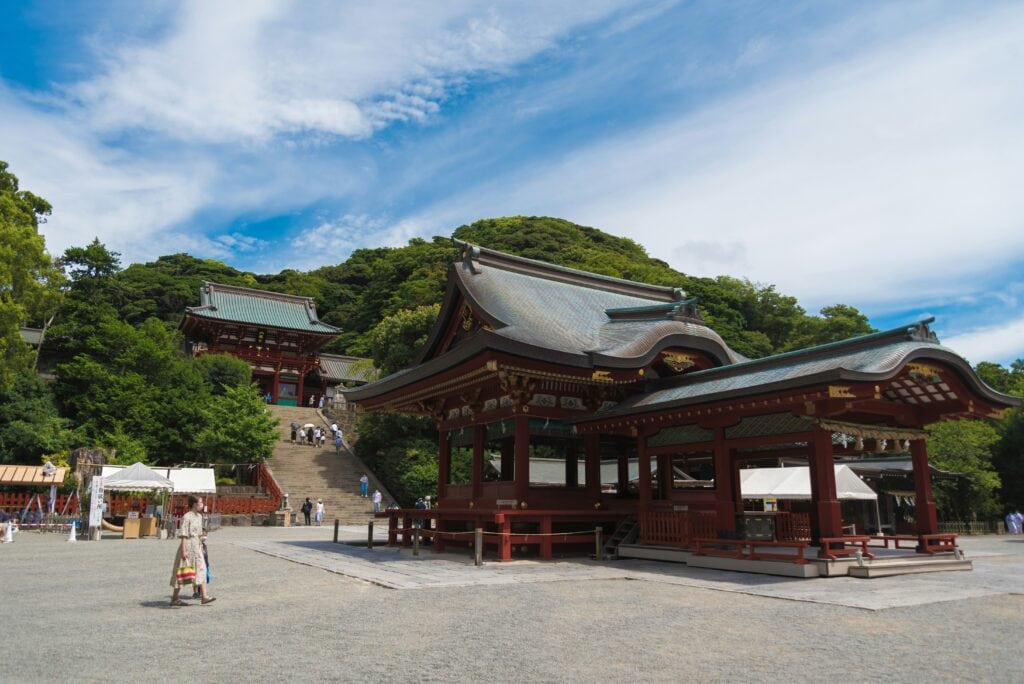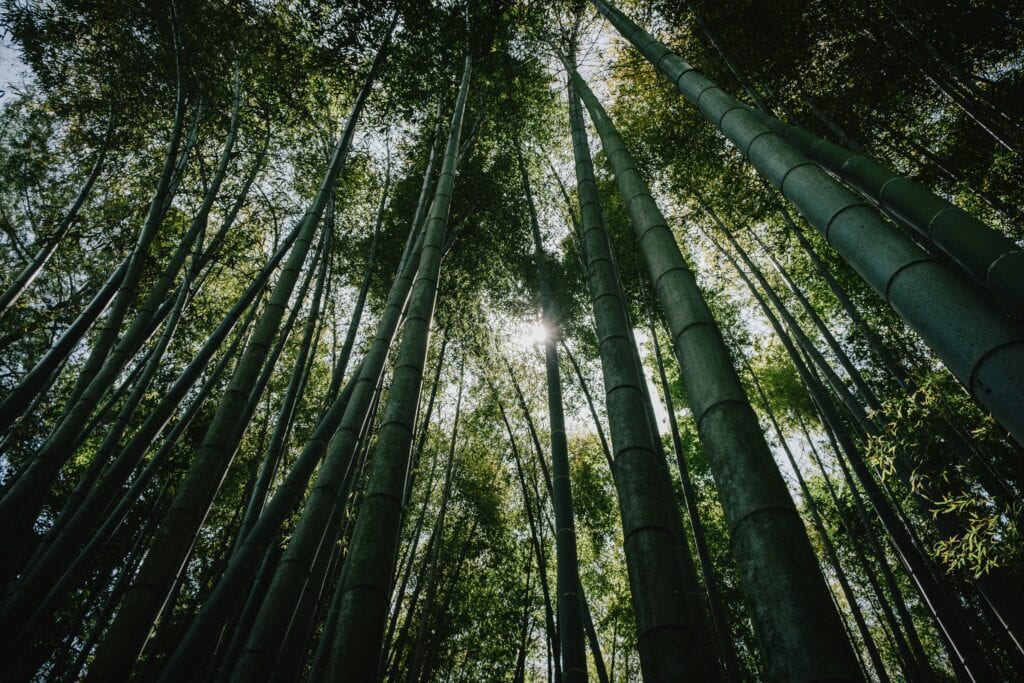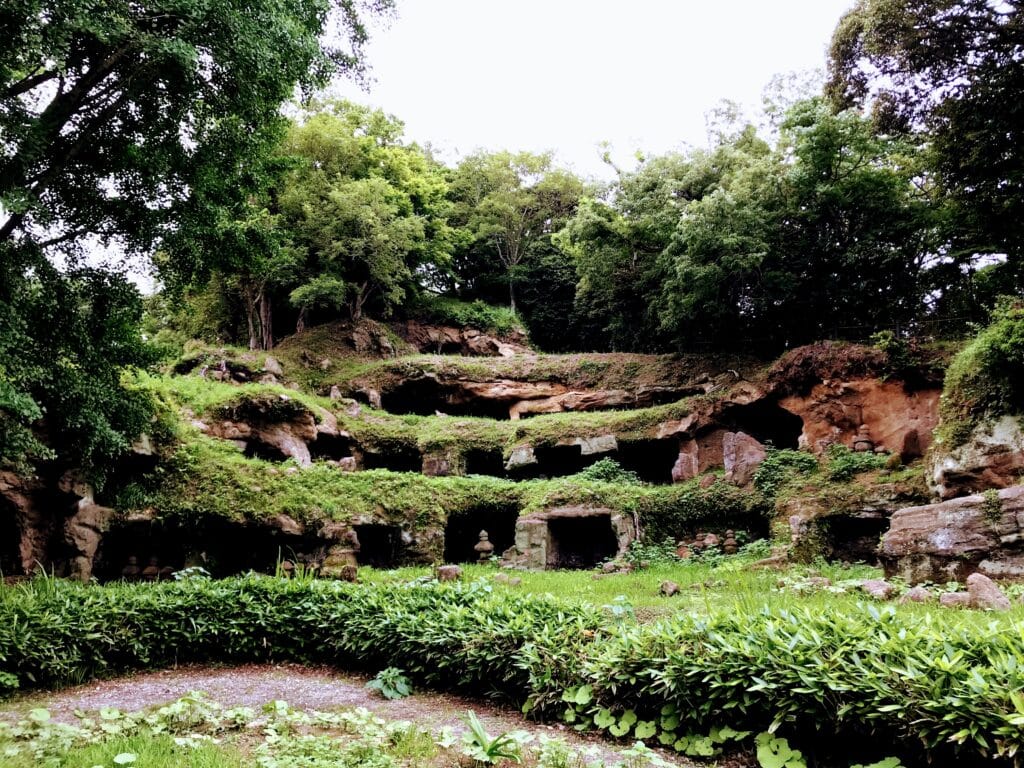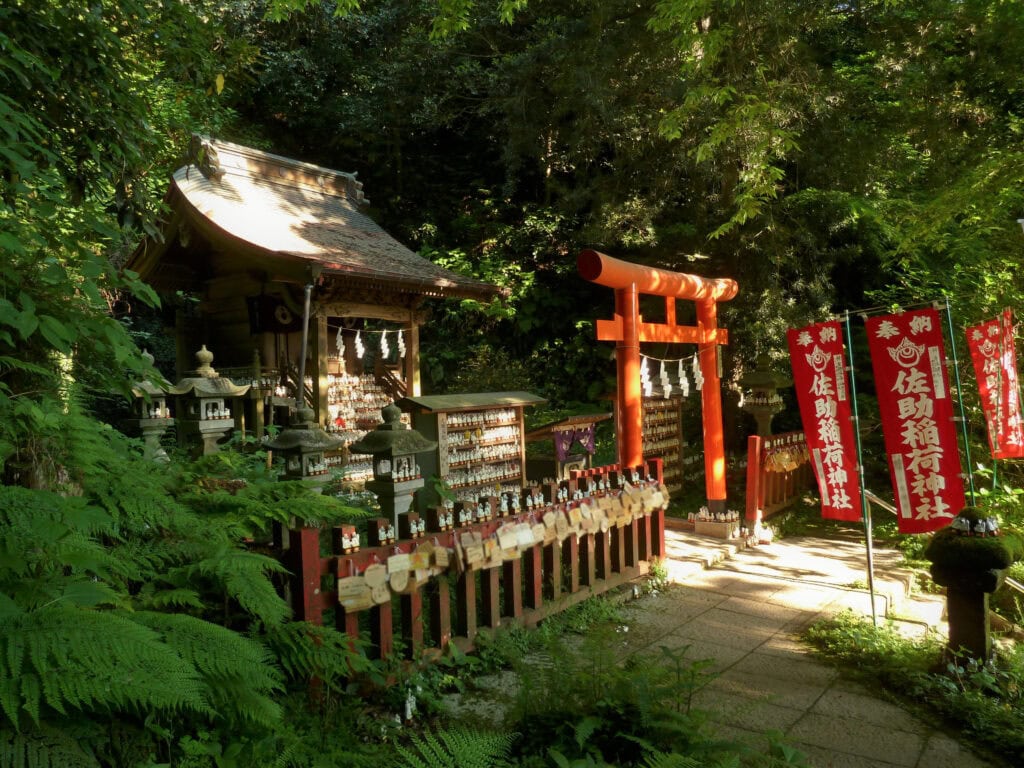The Ultimate Nikko Day Trip Guide

Nestled in the mountains of Tochigi Prefecture, Nikko stands as a testament to Japan’s rich cultural heritage and natural beauty. This UNESCO World Heritage site, just a few hours from the bustling metropolis of Tokyo, offers visitors a perfect escape into a world where history, spirituality, and nature intertwine. From its lavishly decorated shrines that whisper tales of ancient shoguns to its breathtaking waterfalls and serene lakes, Nikko promises an unforgettable journey through Japan’s past and present.. Here’s everything you need to know before planning your one day trip to Nikko!
Getting to Nikko: Your Day Trip Begins
The journey to Nikko is an integral part of the experience, offering travelers a glimpse of Japan’s efficient transportation system and scenic countryside.
Private Guide and Van: Tailored Comfort
For those seeking a more personalized and flexible experience, hiring a private guide with a van offers numerous advantages:
- Door-to-Door Service: Pick-up and drop-off at your Tokyo accommodation
- Customizable Itinerary: Tailor your day to your interests and pace
- Local Expertise: Benefit from a guide’s in-depth knowledge of Nikko’s history and hidden gems
- Comfort and Convenience: Ideal for families, groups, or those with limited mobility
- Time-Efficient: Maximize your day by easily moving between attractions
- Cost: While more expensive, it can be cost-effective for groups
- Booking: Reserve through HavenJapan, click here for a safe and free minded trip
By Train: The Scenic Route
The most popular and convenient way to reach Nikko is by train, with several options catering to different preferences and budgets:
- Tobu Limited Express SPACIA:
- Departs from Asakusa Station in Tokyo
- Travel Time: Approximately 2 hours
- Cost: ¥2,800 one-way
- Features: Comfortable seating, panoramic windows, and onboard Wi-Fi
- Tip: Reserve seats in advance, especially during peak seasons
- JR Tohoku Shinkansen + Local Train:
- Take the Shinkansen to Utsunomiya, then transfer to the JR Nikko Line
- Total Travel Time: About 2 hours
- Cost: Approximately ¥5,000 one-way (covered by JR Pass)
- Advantage: Faster if coming from Tokyo Station or northern Tokyo
- Tobu Local Trains:
- Budget-friendly option from Asakusa Station
- Travel Time: About 2.5 hours with a transfer at Shimo-Imaichi
- Cost: ¥1,400 one-way
- Perfect for travelers who enjoy a leisurely pace and don’t mind transfers
Nikko's Day Trip Must-See Attractions
Nikko boasts a wealth of attractions that showcase Japan’s artistic, cultural, and natural heritage. Here are the sites you absolutely cannot miss:
TōShogū Shrine: A Gilded Marvel
The crown jewel of Nikko, Toshogu Shrine stands as a testament to the power and wealth of the Tokugawa shogunate. Dedicated to Tokugawa Ieyasu, the founder of the Tokugawa shogunate, this lavishly decorated complex is a feast for the eyes and a journey through Japanese history.
- Yomeimon Gate: Known as the “Sunset Gate,” this structure is adorned with over 500 intricate carvings of mythical beasts, flowers, and Chinese sages. Each column is uniquely carved, with none repeating a pattern.
- Three Wise Monkeys: Perhaps the most famous carving at Toshogu, this panel depicts the proverbial principle “see no evil, hear no evil, speak no evil.” It’s part of a larger series illustrating the life cycle and moral development.
- Sleeping Cat (Nemuri-neko): This small but exquisite carving symbolizes peace and prosperity. Legend has it that the cat will awaken to protect Japan in times of need.
- Sacred Stables: Home to the famous carving of the three monkeys, the stables also feature lifelike depictions of elephants, remarkable considering the artist had never seen a real elephant.
- Honjido Hall: Famous for its “crying dragon” painted on the ceiling. Clap beneath it to experience the unique acoustic properties of the room.
Visitor Information:
- Opening Hours: 8:00 AM to 5:00 PM (April to October), 8:00 AM to 4:00 PM (November to March)
- Admission: ¥1,300 for adults, ¥450 for children
- Time Needed: At least 2 hours to fully appreciate the complex
- Tip: Consider hiring a guide at the entrance for in-depth explanations of the shrine’s symbolism and history
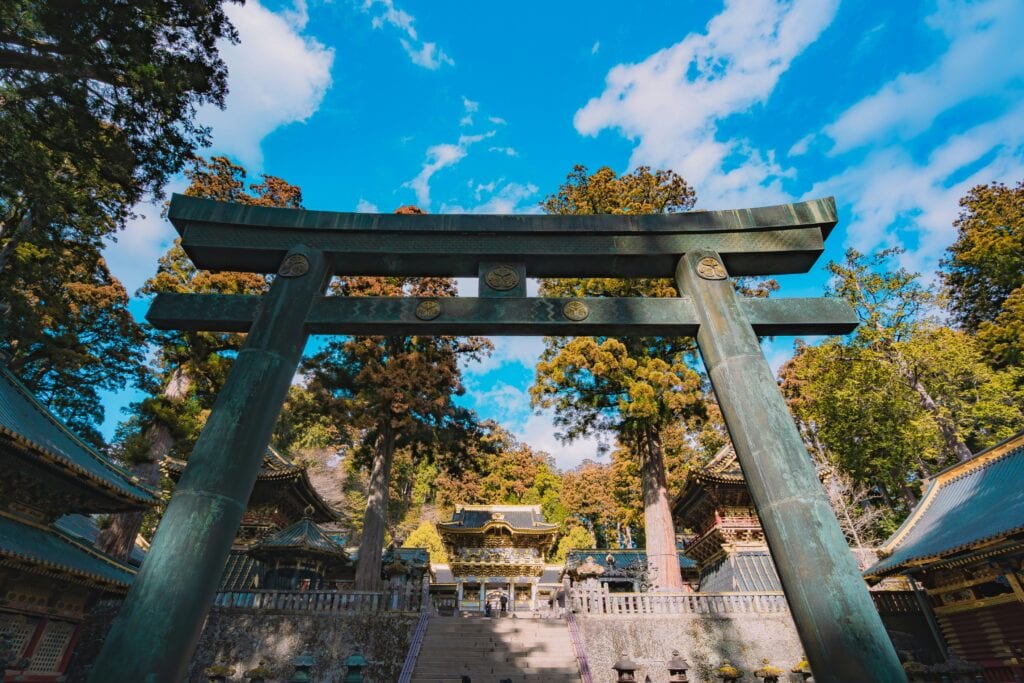
One of Japan’s three most beautiful waterfalls, Kegon Falls is a 97-meter drop of pure natural beauty, formed by the waters of Lake Chuzenji.
- Observation Decks:
- Free Upper Observation Platform: Offers a distant but impressive view of the falls
- Paid Lower Observation Deck: Accessible via elevator (¥570), provides a close-up view of the waterfall’s power
- Best Viewing Times:
- Spring: Surrounded by fresh greenery
- Summer: Powerful water flow
- Autumn: Framed by vibrant fall colors (peak in late October)
- Winter: Partially frozen, creating a unique spectacle
- Nearby Attractions:
- Akechidaira Ropeway: For panoramic views of Kegon Falls, Lake Chuzenji, and surrounding mountains
- Kegon Falls Visitor Center: Learn about the geology and ecology of the area
Practical Information:
- Access: 30-minute bus ride from Nikko Station to Chuzenji Onsen bus stop
- Best Time to Visit: Early morning to avoid crowds and catch the morning light on the falls
- Photography Tip: Bring a tripod for long-exposure shots that capture the water’s silky texture
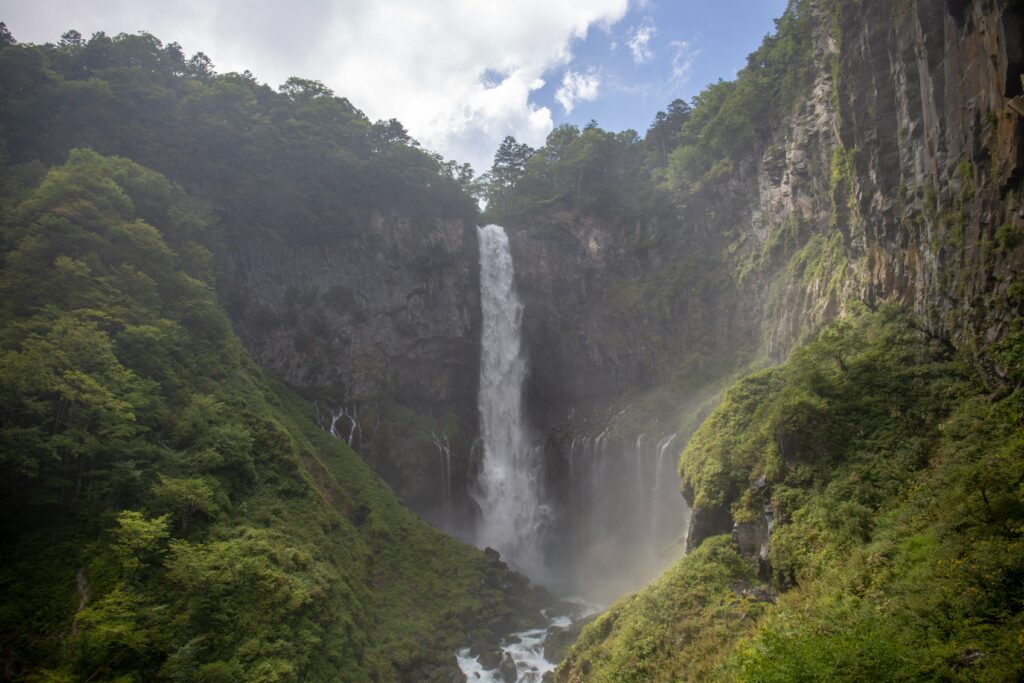
Formed by a volcanic eruption 20,000 years ago, Lake Chuzenji offers scenic beauty and recreational activities year-round.
- Boat Cruises:
- 55-minute round trip showcasing the lake’s shoreline and surrounding mountains
- Special sunset cruises available in summer and autumn
- Hiking Trails:
- Hangetsuyama Trail: Moderate 3-hour hike offering panoramic views of the lake
- Shoreline Nature Trail: Easy walk suitable for all ages, featuring diverse flora and fauna
- Seasonal Activities:
- Spring: Cherry blossom viewing around the lake’s shores
- Summer: Watersports including kayaking and stand-up paddleboarding
- Autumn: Spectacular foliage reflected in the lake’s calm waters
- Winter: Ice fishing for smelt (wakasagi)
- Notable Spots:
- Italian Embassy Villa Memorial Park: Former summer residence turned museum with beautiful lakeside gardens
- Chuzenji Temple: Small but significant temple with a statue of Kannon visible from the lake
Visitor Tips:
- Allow at least half a day to fully enjoy the lake and its surroundings
- Consider renting a bicycle to explore the lakeshore at your own pace
- Pack a picnic to enjoy at one of the many scenic spots around the lake
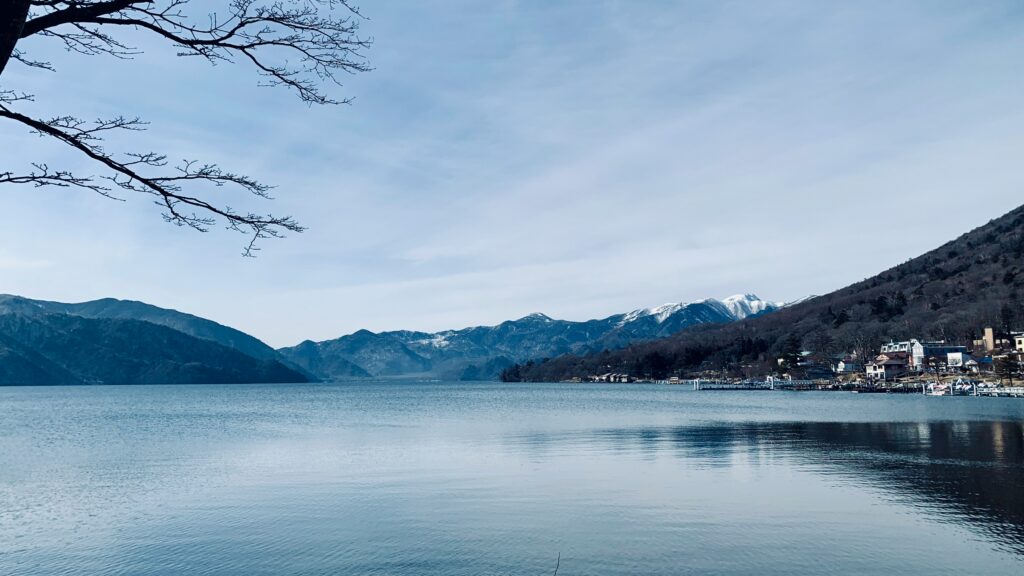
Culinary Delights of Nikko
Nikko’s cuisine reflects its mountain location and rich cultural heritage, offering unique flavors and dining experiences.
Yuba: Nikko's Signature Dish
Yuba, or tofu skin, is a local specialty that has been perfected in Nikko over centuries.
- What is Yuba?: The thin skin that forms on the surface of heated soy milk, prized for its delicate texture and nutritional value
- Nikko Yuba Zen: A multi-course meal featuring various yuba preparations:
- Fresh yuba sashimi
- Yuba tempura
- Yuba wrapped around vegetables
- Yuba in clear soup
- Yuba sushi rolls
- Yuba Soba: Cold soba noodles topped with strips of yuba, a refreshing summer dish
- Where to Try:
- Nikko Yuba Manufacture: Watch yuba being made and sample fresh products
- Nikko Yubamaki Zen: Modern takes on yuba dishes in a stylish setting
Other Local Specialties
- Nikko Wagyu: High-quality beef from locally raised cattle, often served as steak or in sukiyaki
- Tochigi Strawberries: Some of Japan’s finest strawberries, available fresh or in desserts (seasonal)
- Kanman Dango: Sweet rice dumplings served with red bean paste, a traditional street food
- Nikko Beer: Craft beer made with local mountain water, available at Nikko Brewing
Where to Eat
- Hippari Dako:
- Famous for its yuba dishes and traditional atmosphere
- Set in a 150-year-old building with a beautiful garden
- Reservation recommended, especially for lunch
- Meiji-no-Yakata:
- Offers stunning views of Kegon Falls while you dine
- Specializes in kaiseki cuisine using local ingredients
- Advance booking essential for window seats
- Nikko Kanaya Hotel Restaurant:
- Historic hotel restaurant serving Western-style dishes since 1873
- Try their famous Nikko pudding for dessert
- Komekichi Kozushi:
- Local favorite for sushi and Japanese dishes
- Known for using fresh yuba in creative sushi rolls
Dining Tips:
- Many restaurants close early (around 5-6 PM), so plan your meals accordingly
- Consider trying a traditional Japanese breakfast at your ryokan if staying overnight
- Look for restaurants displaying the “Yasuragi” logo, indicating they use local Tochigi ingredients
Off the Beaten Path: Hidden Gems
While Nikko’s main attractions draw the crowds, the area is rich with lesser-known spots that offer unique experiences and a deeper connection to the region’s natural beauty and cultural heritage.
A scenic gorge formed by an eruption of nearby Mount Nantai, featuring a row of about 70 Jizo statues known as “Bake Jizo” (ghost Jizo).
- The Legend: It’s said that the number of statues changes each time you count them
- Scenic Walk: A peaceful 1 km path along the river, perfect for contemplation
- Best Time to Visit: Early morning for misty, atmospheric views
- Access: 20-minute walk from Nikko’s central area
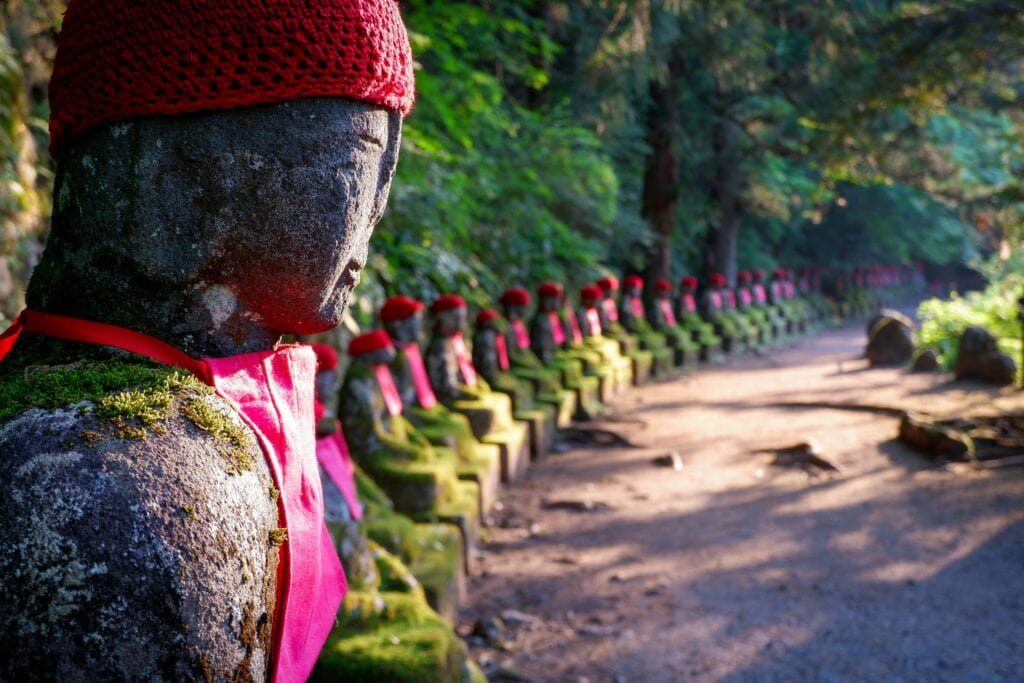
A blend of traditional Edo and early modern Meiji architecture, this former imperial summer house offers a glimpse into Japan’s royal past.
- Architectural Features: 106 rooms combining Japanese, Western, and Imperial styles
- Gardens: Beautifully landscaped grounds changing with each season
- Historical Significance: Used by the Imperial family until 2000
- Visitor Information:
- Open: 9:00 AM to 4:00 PM (closed Tuesdays)
- Admission: ¥510 for adults
- Guided tours available in Japanese (English pamphlets provided)
While less famous than Kegon Falls, Kirifuri Waterfall offers a serene natural experience away from the crowds.
- Two-Tiered Falls: Upper fall (75m) and lower fall (25m)
- Hiking Trail: Easy 1-hour round trip hike from the parking area
- Viewing Platform: Offers a close-up view of the falls
- Best Season: Late October for autumn colors
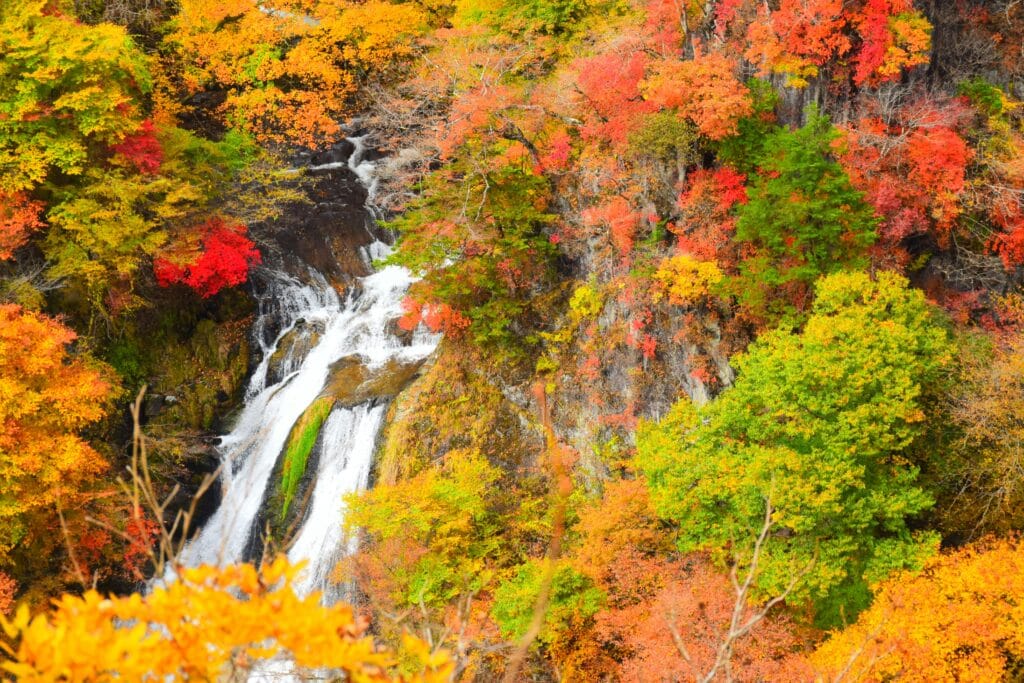
Established in 1902, these gardens showcase the diverse flora of the Nikko region.
- Plant Collection: Over 2,000 species, including many native to Nikko
- Highlights: Alpine plant section, cherry blossoms in spring, autumn colors
- Research Facility: Part of the University of Tokyo, conducting important botanical studies
- Visitor Info: Open April to November, ¥330 admission
Seasonal Highlights: When Is the Best Time For You to Plan Your Nikko Day Trip
Nikko’s beauty transforms dramatically with each season, offering unique experiences throughout the year.
Spring: Cherry Blossoms at Their Finest
- Best Time: Late April to early May, about two weeks later than Tokyo
- Top Spots:
- Nikko Botanical Garden: Variety of cherry tree species
- Shoyoen Garden (part of Rinnoji Temple): Weeping cherry trees
- Nikko Natural Science Museum: Cherry tree-lined paths
- Spring Events:
- Yayoi Festival at Futarasan Shrine (April 13-17): Traditional ceremonies and parades
Summer: Lush Greenery and Festivals
- Peak Season: July to August
- Highlights:
- Refreshing temperatures, perfect for hiking and outdoor activities
- Clear views of waterfalls at their most powerful
- Lake Chuzenji for water sports and lakeside relaxation
- Summer Events:
- Nikko Toshogu Grand Festival (May 17-18): Spectacular 1,000-person procession in Edo-period costumes
- Ryuokyo Gorge: Ideal for canyoning and river trekking
Autumn: A Tapestry of Colors
- Peak Season: Mid-October to early November
- Must-Visit Locations:
- Okunikko region: Lake Chuzenji, Kegon Falls, and Senjogahara Marshland
- Akechidaira Plateau: Panoramic views of autumn foliage
- Nikko National Park: Hiking trails through colorful forests
- Autumn Events:
- Nikko Chrysanthemum Festival (October-November): Elaborate flower displays at Nikko Toshogu Shrine
Winter: Serene Snowscapes
- Season: December to March
- Winter Attractions:
- Kegon Falls: Partially frozen, creating a unique ice sculpture
- Yunishigawa Onsen Kamakura Festival: Snow huts and illuminations (January-March)
- Nikko Toshogu Shrine: Snow-covered structures offer a different perspective
- Winter Sports:
- Skiing and snowboarding at Okunikko Yumoto Ski Resort
- Snowshoeing in Senjogahara Marshland
Nikko Day Trip with Kids
Nikko’s blend of nature, history, and culture makes it an excellent destination for families. Here are some kid-friendly attractions and tips to ensure a memorable day trip for visitors of all ages:
Kid-Friendly Attractions
- Edo Wonderland (Nikko Edomura):
- A theme park recreating life in the Edo period
- Interactive experiences like ninja shows and samurai sword demonstrations
- Opportunity to dress up in traditional costumes
- Great for children aged 5 and up
- Tobu World Square:
- Miniature park featuring 1/25th scale models of famous world landmarks
- Perfect for sparking children’s interest in global architecture and culture
- Wheelchair and stroller friendly
- Nikko Tamozawa Imperial Villa Memorial Park:
- Spacious gardens for kids to explore
- Child-friendly guided tours available
- Historical dress-up photo opportunitie
Nature Activities for Families
Easy Hikes & Scenic Walks
Nikko’s trails cater to little legs and curious minds:
-
- Senjogahara Marshland:
- Flat boardwalk trails through wetlands with views of Mount Nantai.
- Spot herons, woodpeckers, and seasonal wildflowers (spring/summer) or snowshoe in winter.
- Combine with Ryuzu Falls for a 2-hour nature walk.
- Kanmangafuchi Abyss:
- Short riverside walk to the mysterious Bake Jizo statues (kids love counting them!).
- Shaded path perfect for strollers, with picnic spots by the Daiya River.
- Lake Chuzenji Loop:
- Rent bikes or stroll the lakeshore, stopping at playgrounds and ice cream stands.
- Take the Akechidaira Ropeway for panoramic views of the lake and Kegon Falls.
- Senjogahara Marshland:
Farm Adventures & Fruit Picking
Nikko’s farms offer interactive experiences that kids adore:
- Nikko Strawberry Park:
- Pick Tochi-Otome strawberries (Dec–May) in wheelchair-accessible greenhouses.
- Pair with visits to the onsite petting zoo (rabbits, guinea pigs) and begonia garden.
- Hanaichimonme:
- Seasonal fruit picking (strawberries, blueberries) and ice cream made from fresh produce.
- Animal encounters and colorful gardens for photo ops.
- Ozasa Farm:
- Meet Brown Swiss cows, try fresh milk soft-serve, and enjoy BBQ lunches in open fields.
- Playground and pony rides for younger kids.
Wildlife & Educational Fun
- Nikko Natural Science Museum:
- Hands-on exhibits about Nikko’s ecosystems.
- Join guided nature tours:
- Insect collecting (summer)
- Night safaris (spotting deer and foxes)
- E-bike tours through forests (ages 8+)
- Chuzenji Onsen Animal Trail:
- Short walk near Lake Chuzenji to spot monkeys, deer, and diverse birdlife.
Tips for Families
- Stroller Strategy: Opt for a carrier at shrines (steep stairs), but Senjogahara and Kanmangafuchi are stroller-friendly.
- Snack Stops: Fuel up with Kanman Dango (sweet rice dumplings) or soft-serve from farm cafes.
- Beat Crowds: Visit Toshogu Shrine before 9 AM and Kegon Falls after 3 PM.
- Weather Prep: Nikko is 5–10°C cooler than Tokyo—pack layers and rain gear.
From fruit picking to waterfall chasing, Nikko’s natural wonders offer endless family fun. 🌿👨👩👧👦
Practical Tips for Your Nikko Day Trip
To make the most of your Nikko adventure, keep these essential tips in mind:
- Comfortable Footwear:
- Many attractions involve walking and climbing stairs
- Wear sturdy, comfortable shoes suitable for uneven terrain
- Early Start:
- Leave Tokyo early (aim for the 7:30 AM Tobu Limited Express) to maximize your day
- Popular sites like Toshogu Shrine get crowded by late morning
- Weather Preparedness:
- Nikko can be significantly cooler than Tokyo, especially in higher elevations
- Dress in layers and bring a light raincoat, as mountain weather can be unpredictable
- Respect Sacred Sites:
- Nikko is home to important religious structures
- Follow posted rules, speak quietly, and ask before taking photos inside buildings
- Language Assistance:
- While English signage is available at major sites, consider downloading a translation app for smoother communication. If you book a One Day Escape to Nikko with us, our guide will assist you through the day.
- Cash and ATMs:
- Many smaller establishments in Nikko only accept cash
- Withdraw money in Tokyo or at the station’s ATM.
Final Thoughts: Crafting Your Perfect Day Trip to Nikko
A day trip to Nikko offers a perfect blend of natural beauty, historical significance, and spiritual tranquility. From the ornate splendor of Toshogu Shrine to the majestic Kegon Falls, Nikko presents a side of Japan that feels worlds away from the modern bustle of Tokyo. Whether you’re drawn by the promise of autumn colors, the allure of ancient traditions, or simply the desire to escape into nature, Nikko provides an unforgettable journey through Japan’s cultural and natural heritage. As you return to Tokyo, refreshed and inspired, you’ll carry with you not just memories, but a deeper appreciation for the multifaceted beauty of Japan.
